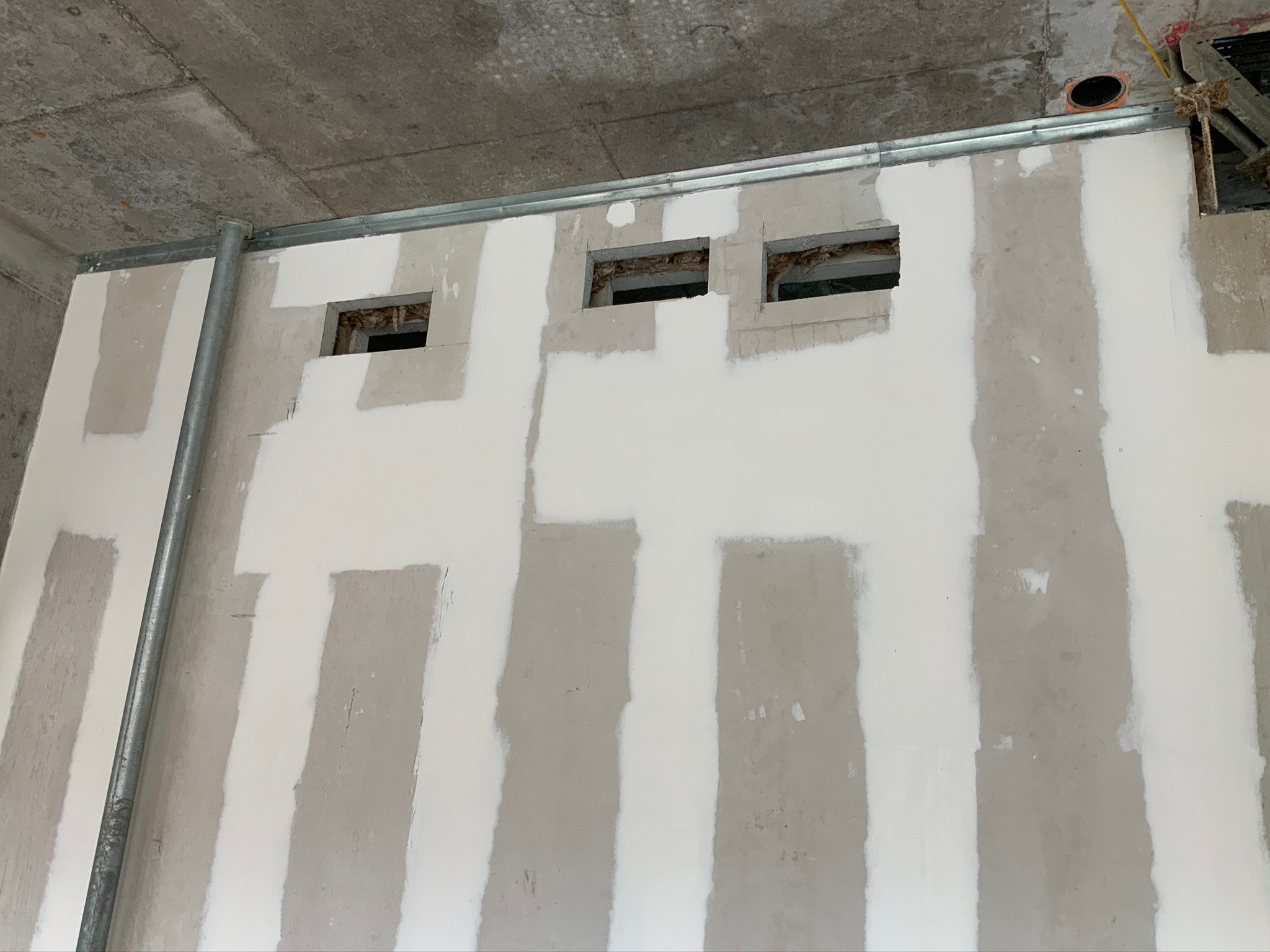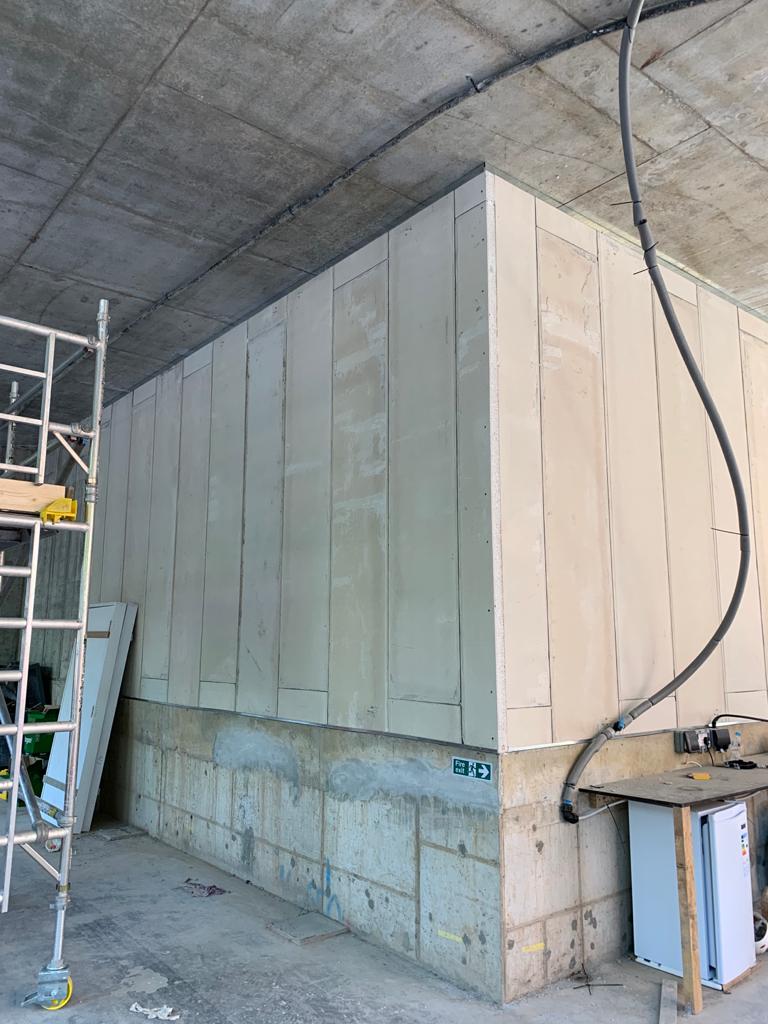site waste reduction
The UK uses 200m sqm of plasterboard and 60m bags of plaster each year. Of this, 60% is used in new builds and 40% for repair, maintenance and improvement of existing buildings.
Up to 1.3m tonnes of plasterboard waste is generated annually, and as much as 30% of all plasterboard waste is from off cuts according to BRE and CWRP.
In contrast, Specwall reduces project waste to less than 3% on site. Recent examples recorded by Specwall include:
- Oxygen: 1,600 sqm installed with 40 sqm waste – 2.5%
- Abbey Upholstery Factory: 280 sqm installed with 8 sqm waste – 2.9%
- Oxford Instruments: 1400 sqm installed with 29 sqm waste – 2.1%
Specwalls reduced waste during construction in several main ways. Firstly, it requires a reduced number of components which means that there is less to be thrown away in the first place.
Secondly, off-cuts can be used for the start of the next panel, in the same way as when you are installing a laminate floor.
Thirdly, openings and penetrations can be cut straight into Specwall without adverse effect. For example, pattresses can be done on site and the cut out section can be used elsewhere. This allows for easy alterations – such as changes in the location of doorways, or the entire floorplate if necessary – without having to throw away the panel and start again.
Finally, Specwall is robust. Damage during transport and installation is reduced. It is also not damaged by water, and does not promote mould growth at any stage. These attributes mean that Specwall panels very rarely get damaged to the point they need to be replaced and discarded – a common occurrence with plasterboard.





